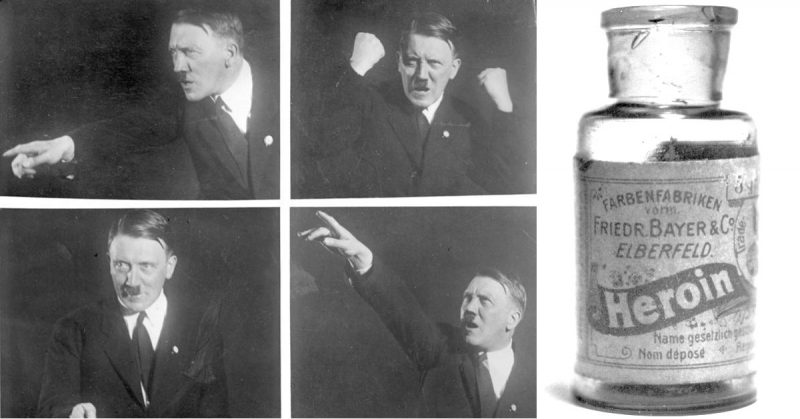A newly translated German book examines in detail how Hitler during the Second World War relied on a cocktail of animal hormones, vitamins, narcotics, and cocaine.
The article drew on an extract derived from Blitzed: Drugs in Nazi Germany, published in the Daily Mail. Author Norman Ohler wrote the dictator was a “super junkie,” and his favored drug contained oxycodone, known in Germany as Eukodal.
Hitler became hooked eventually on a mix of drugs administered by his personal physician, Theodor Morell, nicknamed the “Reich injection master.”
Morell explained how Hitler would go from fatigue and exhaustion to refreshed and very satisfied after the injection of a combination of newly developed vitamin and hormones.
In addition, he also supplied Hitler’s lover, Eva Braun, with a similar combination and other drugs to suppress her menstruation, so the duo had more time for intimacy. Morell was steadfast regarding the benefits of physical love including extramarital affairs if required. As written in the book, Morell recalled years after the war that Hitler had often canceled medical examinations to hide bodily wounds resulting from Braun’s forceful sexual behavior.
When the Red Army started conquering more territory in late 1944, Hitler became increasingly resistant to the drugs.
His veins were so damaged that veteran drug–injector Morell found difficulty penetrating them, Ohler wrote. The venous skin from so many perforations became scarred, inflamed and a strange shade of brown. Each injection made a new wound that connected with the previous one. It made an elongated, growing crust; what addicts call track marks, reports the Jerusalem Post.
Hitler’s suicide was assisted by drugs, as well, explained the author: with no Eukodal left he chose the bullet.
The book maintains that drugs for Nazis were first tried out with concentration camp prisoners.
In one instance using a cocaine chewing gum, prisoners at Sachsenhausen concentration camp were given very high doses of drugs such as 50 to 100 milligrams of pure cocaine in pill form, Pervitin (akin to crystal meth) as chewing gum, or 20 milligrams of cocaine also supplied as chewing gum.
Prisoners were then forced to march overnight to test the effects. Ohler wrote that after marching seven or eight hours, most stopped marching because of sore feet.
